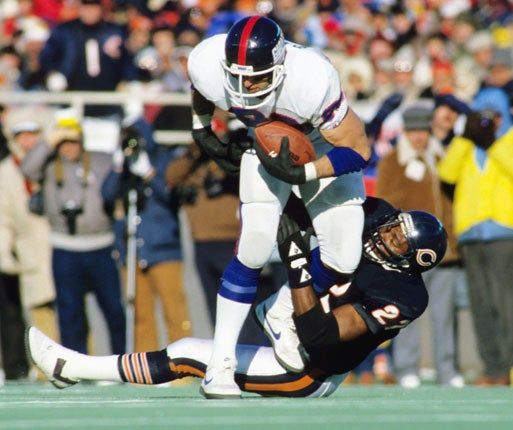Tragic NFL star's last wish could shed new light on game's risks

Your support helps us to tell the story
As your White House correspondent, I ask the tough questions and seek the answers that matter.
Your support enables me to be in the room, pressing for transparency and accountability. Without your contributions, we wouldn't have the resources to challenge those in power.
Your donation makes it possible for us to keep doing this important work, keeping you informed every step of the way to the November election

Andrew Feinberg
White House Correspondent
Mired in financial and personal problems, the two-time Superbowl champion Dave Duerson turned his gun on himself in his Miami apartment last week in a suicide that, as well as a heartbreaking personal tragedy, has become another sign of a developing crisis in American football.
Mr Duerson chose to shoot himself in the chest, so that – as he requested in anguishing texts to his family before he died – his uninjured brain could be studied for signs of chronic traumatic encephalopathy (CTE), a degenerative condition associated with dementia, depression and suicidal thoughts.
CTE, believed to result from the accumulated effects of concussions and other bangs to the head, has emerged as the foremost safety concern in American contact sports.
The debate is particularly heated in football, whose players attempt to knock each other over like ninepins in their quest for on-field glory. The sport's governing authority, the National Football League, is currently trying to extend the professional season from 16 to 18 games. The emerging science on the subject suggests that football players could be between five and 19 times more likely to suffer from CTE than the rest of the population.
In recent months, Mr Duerson, a long-standing activist in the players' union, had expressed his fears that he was suffering from the condition. CTE was also found in the brain of Andre Waters, a former Philadelphia Eagles player who killed himself in 2006, and – in its early stages – in Owen Thomas, a 21-year-old college player who hanged himself last year.
As concern about the possible links between CTE and American football have escalated, numerous athletes have promised to donate their brains after death for study of the condition. Tests cannot currently be conducted on living athletes.
Dr Chris Nowinski, at the Center for the Study of Traumatic Encephalopathy at Boston University School of Medicine, said he was contacted by a representative of the NFL Players Association on behalf of Mr Duerson's family last Friday, then secured the donation later in the day.
"The goal of the research is both to better understand the disease so we can treat it, develop a diagnostic test for people while they're alive, and also use the information to develop better prevention for current athletes," Dr Nowinski said. "You can never link a single act to a disease, but a large percentage of CTE cases have committed suicide."
Mr Duerson, 50, faced foreclosure and bankruptcy after the collapse of a business venture, and was in a legal fight over money with his ex-wife.
His 11-year career had been capped with two Superbowl victories as a defensive back for the New York Giants and the Chicago Bears. Court filings showed that his ex-wife had accused him of trying to hide some of his assets from her, including his two Superbowl rings, the valuable mementos given to all winning players. He leaves behind three sons and a daughter.
Within the NFL and its players' union, the debate appears to have shifted in recent months from whether football and CTE are linked to how to minimise the risks of head injuries, both large and small. The risk is that player lawsuits could cripple the sport if it emerges that the NFL could have done more earlier to mitigate the dangers, while in the long run, the authorities fear young people will shun the sport.
The NFL has made donations to research the causes and effects of CTE, and has examined new helmets and changes to the rules to minimise physical clashes, but must also confront the reality that head injuries will always be a risk in a ferocious contact sport.
Subscribe to Independent Premium to bookmark this article
Want to bookmark your favourite articles and stories to read or reference later? Start your Independent Premium subscription today.
Join our commenting forum
Join thought-provoking conversations, follow other Independent readers and see their replies
Comments